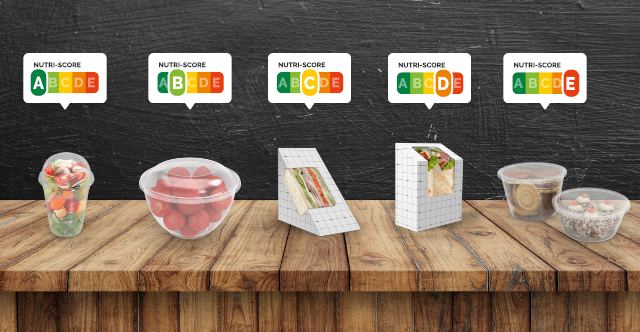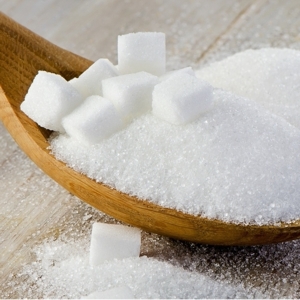Many jurisdictions are mandating labels on food product packaging warning they contain excess Sugar, Salt and Fat. The next step may be adding such labels to restaurant menus so diners can compare menu items on the spot…
 Nutri-Score labels have been suggested as blanket ratings of the relative healthfullness
Nutri-Score labels have been suggested as blanket ratings of the relative healthfullness
of prepared foods. Such labels could easily be added to restaurant menus.
Though they would be slightly more complicated to design, labels
showing quantities of excess nutrients could be devised.
A team of behavioural researchers from University of California – Davis (UCD) wanted to know whether warning labels about excess sugar, fat and salt on restaurant menus would influence diners toward making healthier selections.
“Given the frequency of restaurant food consumption, [even] modest effects could lead to meaningful changes in sugar intake at the population level, and the labels should motivate restaurants to reduce the added-sugar content of their menus,” says Jennifer Falbe, a researcher in the Department of Human Ecology and lead author. She notes, it is estimated that 21 percent of calories consumed in the United States come from restaurants.
What they did
According to an abstract of the study report: “Consumers selected menu items they would want to order for dinner from menus that included common foods like hamburgers, salads, French fries, beverages (with sugar and sugar-free), sodas, cookies, sundaes and smoothies. […] More than 15,000 participants were recruited to match the U.S. population in terms of age, gender, race and ethnicity, and education. Half of them were randomized to select from menus with added-sugar warning labels while the other half [the control group] selected from menus without added-sugar labels.”
What they found
The study’s major findings included:
- Added-sugar warning labels reduced the likelihood that consumers would order an item high in added sugar.
- The warning labels helped consumers understand whether menu items were high in added sugar.
- A large majority, or 72 per cent, of consumers in the study indicated that they supported a law requiring chain restaurants to post these warning labels on their menus.
Large chain restaurants – i.e.- Quick Service Restaurants such as McDonald’s – must make available nutrition info available to diners. Pamphlets are available in-store at most brands’ outlets and online. Though some restaurants make such information available on request (on a similar basis to allergen information), there is currently no requirement for added sugar to be publicly disclosed for restaurant foods, researchers noted.
“Warning icons provide easily interpretable information to consumers and equip them with the information they need to make informed decisions,” said report co-author Dr. DeAnna Nara. “They also have the potential to encourage restaurants to rethink their recipes, spurring reformulation to cut back on added sugars.”
The takeaway
There was – as often occurs – a down side to the study outcomes. It tuned out that only 21 percent of the consumers exposed to the added-sugar warning labels noticed them. Among those who noticed the labels, there was a reduction of 4.9 grams of added sugar ordered per meal, compared to the control group.
“Given that most participants did not notice the added-sugar labels,” Falbe added, “our findings also indicate that menu labels should be designed for higher visibility.”
My take
Some restaurant operators will immediately argue that adding such warning labels would ruin the esthetics of their menus, possibly making a negative impact on the menus’ sales effectiveness. I would immediately point out that, if all restos were compelled to follow labelling regulations, they would all be at an equal disadvantage – however great or small that effect might be.
And no matter how great or small the initial penetration of such warning labels might be into the mass psyche of resto diners, I believe it will eventually become routine for the vast majority to refer to them when considering their meal choices. It’s human nature. Knowing that other diners at their table will be able to check their menus, to see what the excess sugar/salt/fat ratings for the menu items they’re ordering are, may influence folks to make more healthful, less guilt-laden choices.
~ Maggie J.

